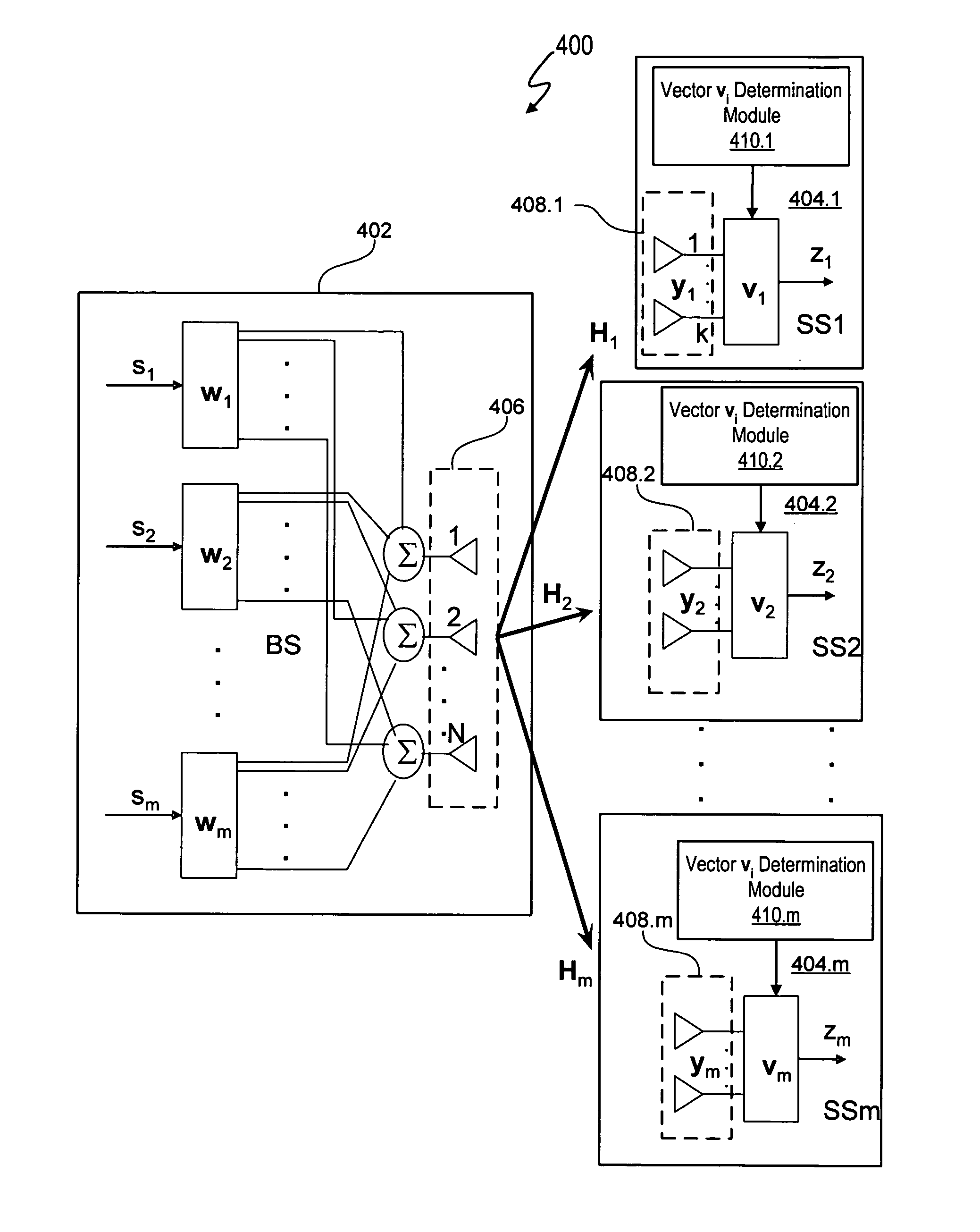Beamforming for non-collaborative, space division multiple access systems
a multi-access system and beamforming technology, applied in the field of information processing, can solve the problems of not feeding forward information, limited electromagnetic frequency spectrum capacity, and challenges to improve spectrum usage efficiency
- Summary
- Abstract
- Description
- Claims
- Application Information
AI Technical Summary
Benefits of technology
Problems solved by technology
Method used
Image
Examples
Embodiment Construction
[0028] A wireless communication system noncollaborative, multiple input, multiple output (MIMO) space division multiple access (SDMA) system determines subscriber station combining and weighting vectors that yield a high average signal-to-interference plus noise ratio (SINR). Each subscriber station independently transmits information to a base station that allows the base station to determine a weight vector wi for each subscriber station using the determined combining vector of the subscriber station. In at least one embodiment, the ith combining vector from the ith subscriber station is derived from or is generated to be substantially equivalent to a right singular vector corresponding to a maximum singular value of a channel matrix between a base station and the ith subscriber station. Each subscriber station transmits signals using a weight vector vi, and the weight vector vi is derived from or is generated to be substantially equivalent to a left singular vector corresponding ...
PUM
 Login to View More
Login to View More Abstract
Description
Claims
Application Information
 Login to View More
Login to View More - R&D
- Intellectual Property
- Life Sciences
- Materials
- Tech Scout
- Unparalleled Data Quality
- Higher Quality Content
- 60% Fewer Hallucinations
Browse by: Latest US Patents, China's latest patents, Technical Efficacy Thesaurus, Application Domain, Technology Topic, Popular Technical Reports.
© 2025 PatSnap. All rights reserved.Legal|Privacy policy|Modern Slavery Act Transparency Statement|Sitemap|About US| Contact US: help@patsnap.com



